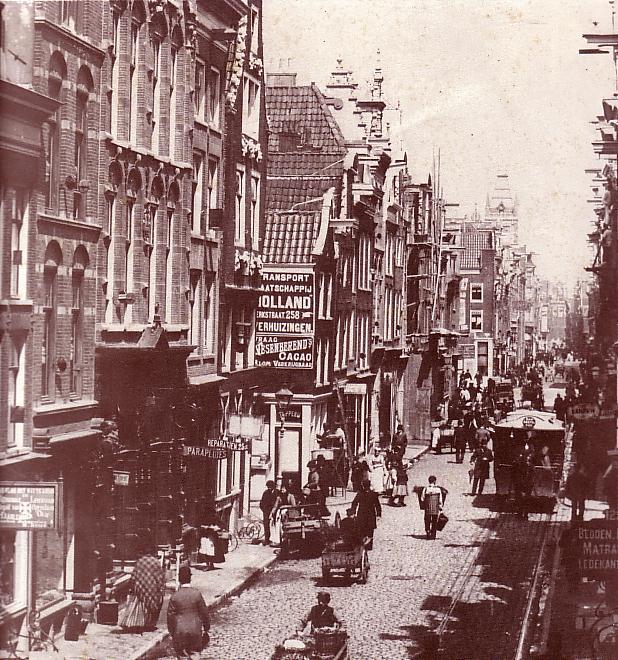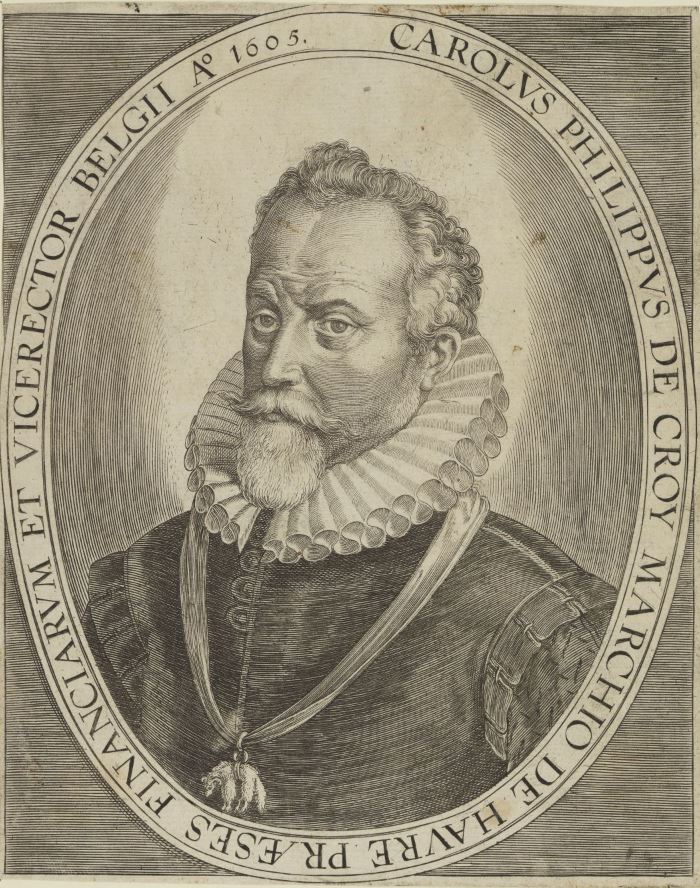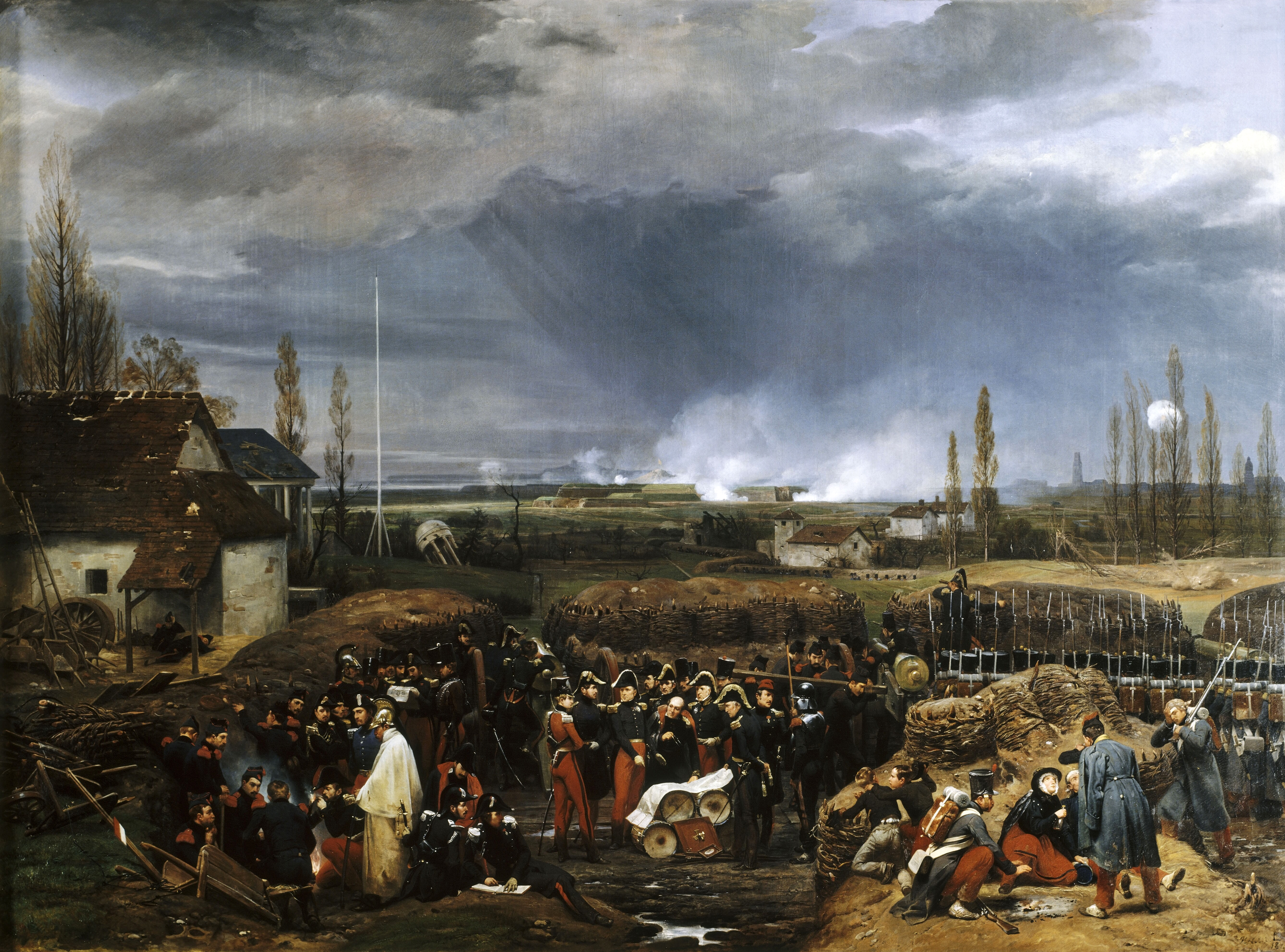|
Sack Of Antwerp
The sack of Antwerp, often known as the Spanish Fury at Antwerp, was an episode of the Eighty Years' War. It is the greatest massacre in the history of the Low Countries. On 4 November 1576, mutinying Spanish tercios of the Army of Flanders began the sack of Antwerp, leading to three days of horror among the population of the city, which was the cultural, economic and financial center of the Low Countries. The savagery of the sack led the provinces of the Low Countries to unite against the Spanish crown. The devastation also caused Antwerp's decline as the leading city in the region and paved the way for Amsterdam's rise. Causes The principal cause of the sack was the delay in payment due to the soldiers by Philip II of Spain, who had recently declared bankruptcy. Bankers refused to perform the transactions the king of Spain asked of them until they had reached a compromise. Case in point, the transfer of the troops' salary from Spain could not be performed by letter of ... [...More Info...] [...Related Items...] OR: [Wikipedia] [Google] [Baidu] [Amazon] |
Eighty Years' War
The Eighty Years' War or Dutch Revolt (; 1566/1568–1648) was an armed conflict in the Habsburg Netherlands between disparate groups of rebels and the Spanish Empire, Spanish government. The Origins of the Eighty Years' War, causes of the war included the Reformation, Centralised state, centralisation, excessive taxation, and the rights and privileges of the Dutch nobility and cities. After Eighty Years' War, 1566–1572, the initial stages, Philip II of Spain, the sovereign of the Netherlands, deployed Army of Flanders, his armies and Eighty Years' War, 1572–1576, regained control over most of the rebel-held territories. However, Spanish Fury, widespread mutinies in the Spanish army caused a general uprising. Under the leadership of the exiled William the Silent, the Catholic and Protestant-dominated provinces sought to establish religious peace while jointly opposing the king's regime with the Pacification of Ghent, but the Eighty Years' War, 1576–1579, general rebelli ... [...More Info...] [...Related Items...] OR: [Wikipedia] [Google] [Baidu] [Amazon] |
Amsterdam
Amsterdam ( , ; ; ) is the capital of the Netherlands, capital and Municipalities of the Netherlands, largest city of the Kingdom of the Netherlands. It has a population of 933,680 in June 2024 within the city proper, 1,457,018 in the City Region of Amsterdam, urban area and 2,480,394 in the Amsterdam metropolitan area, metropolitan area. Located in the Provinces of the Netherlands, Dutch province of North Holland, Amsterdam is colloquially referred to as the "Venice of the North", for its canals of Amsterdam, large number of canals, now a World Heritage Site, UNESCO World Heritage Site. Amsterdam was founded at the mouth of the Amstel River, which was dammed to control flooding. Originally a small fishing village in the 12th century, Amsterdam became a major world port during the Dutch Golden Age of the 17th century, when the Netherlands was an economic powerhouse. Amsterdam was the leading centre for finance and trade, as well as a hub of secular art production. In the 19th ... [...More Info...] [...Related Items...] OR: [Wikipedia] [Google] [Baidu] [Amazon] |
Charles Philippe De Croÿ
Charles Philippe of Croÿ (1 September 1549 – 23 November 1613 in Burgundy), Marquis of Havré, was a soldier and politician from the Spanish Netherlands. Life He was the son of Philippe II de Croÿ and his second wife Anna of Lorraine. His godfathers were King Charles V and his son, the future King Philip II of Spain. He fought under the Fernando Álvarez de Toledo, Duke of Alba against William the Silent in 1568 and one year later under King Charles IX of France against the Huguenots. He was seriously wounded in the Battle of Moncontour and was treated in the castle of Havré by Ambroise Paré. Charles Philippe was a confidant of King Philip II and became a member of the Council of State in the Low Countries. In 1576, he tried vainly to stop the Sack of Antwerp. In 1577, he defected to the Union of Brussels and was awarded the post of Ambassador in England by the rebels. In 1579, he was on a mission in Artois with Adolf van Meetkercke when he defected back to the camp of K ... [...More Info...] [...Related Items...] OR: [Wikipedia] [Google] [Baidu] [Amazon] |
William IV Of Eberstein
Count Wilhelm IV of Eberstein (3 May 1497 – 1 July 1562) was a member of the Swabian noble Eberstein family. His father, Bernhard III (1459–1526) was president of the Reichskammergericht from 1510 to 1520. His mother was Countess Kunigunde of Sonnenberg (1472–1538). Like his father, Wilhelm IV served as president of the Reichskammergericht; he presided from 1546 to 1555. He and his wife are mentioned several times in the ''Zimmern Chronicle'', which was written by their son-in-law, Count Froben Christoph of Zimmern. In 1561, Wilhelm officially converted the County of Eberstein to Protestantism. He had been unofficially promoting the Evangelical faith for some time. He expanded his Neu-Eberstein Castle significantly. A tombstone depicting Wilhelm and his wife, has been preserved in the St. Jakob church in Gernsbach. Marriage and issue On 6 November 1522, he married Countess Johanna of Hanau-Lichtenberg (1507–1572), the eldest daughter of Philipp III, Count of Han ... [...More Info...] [...Related Items...] OR: [Wikipedia] [Google] [Baidu] [Amazon] |
Citadel Of Antwerp
Antwerp Citadel (, ) was a pentagonal bastion fort built to defend and dominate the city of Antwerp in the early stages of the Dutch Revolt. It has been described as "doubtlesse the most matchlesse piece of modern Fortification in the World" and as "one of the most studied urban installations of the sixteenth century". History The citadel was designed by the Italian engineer Francesco Paciotto and built on the orders of the Duke of Alva. Initial construction was completed in 1572. After the Sack of Antwerp (1576) the citizens partially demolished the fortification, but it was reconstructed after the Fall of Antwerp (1585). The citadel saw action towards the end of the Napoleonic Wars, when it was defended by determined Bonapartists. The Siege of Antwerp (1814) continued for a month after Napoleon's abdication. After the Belgian Revolution of 1830, Dutch forces remained in control of the citadel until the Siege of Antwerp (1832). Demolition began in 1874 and was completed in 18 ... [...More Info...] [...Related Items...] OR: [Wikipedia] [Google] [Baidu] [Amazon] |
Mercenary
A mercenary is a private individual who joins an armed conflict for personal profit, is otherwise an outsider to the conflict, and is not a member of any other official military. Mercenaries fight for money or other forms of payment rather than for political interests. Beginning in the 20th century, mercenaries have increasingly come to be seen as less entitled to protection by rules of war than non-mercenaries. The Geneva Conventions declare that mercenaries are not recognized as legitimate combatants and do not have to be granted the same legal protections as captured service personnel of the armed forces. In practice, whether or not a person is a mercenary may be a matter of degree, as financial and political interests may overlap. International and national laws of war Protocol Additional GC 1977 (APGC77) is a 1977 amendment protocol to the Geneva Conventions. Article 47 of the protocol provides the most widely accepted international definition of a mercenary, th ... [...More Info...] [...Related Items...] OR: [Wikipedia] [Google] [Baidu] [Amazon] |
States-General Of The Netherlands
The States General of the Netherlands ( ) is the supreme bicameral legislature of the Netherlands consisting of the Senate () and the House of Representatives (). Both chambers meet at the Binnenhof in The Hague. The States General originated in the 15th century as an assembly of all the provincial states of the Burgundian Netherlands. In 1579, during the Dutch Revolt, the States General split as the northern provinces openly rebelled against Philip II, and the northern States General replaced Philip II as the supreme authority of the Dutch Republic in 1581. The States General were replaced by the National Assembly after the Batavian Revolution of 1795, only to be restored in 1814, when the country had regained its sovereignty. The States General was divided into a Senate and a House of Representatives in 1815, with the establishment of the United Kingdom of the Netherlands. After the constitutional amendment of 1848, members of the House of Representatives were directly elect ... [...More Info...] [...Related Items...] OR: [Wikipedia] [Google] [Baidu] [Amazon] |
Zeeland
Zeeland (; ), historically known in English by the Endonym and exonym, exonym Zealand, is the westernmost and least populous province of the Netherlands. The province, located in the southwest of the country, borders North Brabant to the east, South Holland to the north, as well as the country of Belgium to the south and west. It consists of a number of islands and peninsulas (hence its name, meaning "Sealand") and a strip bordering the Flanders, Flemish provinces of East Flanders, East and West Flanders. Its capital is Middelburg, Zeeland, Middelburg with a population of 48,544 as of November 2019, although the largest municipality in Zeeland is Terneuzen (population 54,589). Zeeland has two Port, seaports: Vlissingen and Terneuzen. Its area is , of which is water; it had a population of about 391,000 as of January 2023. Large parts of Zeeland are below sea level. The North Sea flood of 1953, last great flooding of the area was in 1953. Tourism is an important economic activ ... [...More Info...] [...Related Items...] OR: [Wikipedia] [Google] [Baidu] [Amazon] |
Holland
Holland is a geographical regionG. Geerts & H. Heestermans, 1981, ''Groot Woordenboek der Nederlandse Taal. Deel I'', Van Dale Lexicografie, Utrecht, p 1105 and former provinces of the Netherlands, province on the western coast of the Netherlands. From the 10th to the 16th century, Holland proper was a unified political region within the Holy Roman Empire as a county ruled by the counts of Holland. By the 17th century, the province of Holland had risen to become a maritime and economic power, dominating the other provinces of the newly independent Dutch Republic. The area of the former County of Holland roughly coincides with the two current Provinces of the Netherlands, Dutch provinces of North Holland and South Holland into which it was divided, and which together include the Netherlands' three largest cities: the Capital of the Netherlands, capital city (Amsterdam), the home of Port of Rotterdam, Europe's largest port (Rotterdam), and the seat of government (The Hague). Hollan ... [...More Info...] [...Related Items...] OR: [Wikipedia] [Google] [Baidu] [Amazon] |
Aalst, Belgium
Aalst (; , ; Brabantian dialect, Brabantian: ''Oilsjt'') is a City status in Belgium, city and Municipalities in Belgium, municipality in the province of East Flanders in the Flemish Region of Belgium. It is located on the Dender River, about northwest of Brussels. The municipality comprises the city of Aalst itself and the villages of Baardegem, Erembodegem, Gijzegem, Herdersem, Hofstade, Meldert, Moorsel and Nieuwerkerken; it is the tenth largest city by population with 90.068 inhabitants. Aalst is crossed by the Molenbeek-Ter Erpenbeek in Aalst and Hofstade. The current mayor of Aalst is Christoph D'Haese, from the Nieuw-Vlaamse Alliantie, New-Flemish Alliance party. The town has a long-standing folkloric feud with Dendermonde, north along the same river, which dates from the Middle Ages. History The first historical records on Aalst date from the 9th century, when it was described as the ''villa Alost'', a dependency of the Abbey of Lobbes. During the Middle Ages, a town ... [...More Info...] [...Related Items...] OR: [Wikipedia] [Google] [Baidu] [Amazon] |
Zierikzee
Zierikzee () is a small city in the southwest Netherlands, 50 km southwest of Rotterdam. It is situated in the municipality of Schouwen-Duiveland, Zeeland. The city hall of Schouwen-Duiveland is located in Zierikzee, its largest city. Zierikzee is connected to Oosterschelde through a canal. In 2001, the town of Zierikzee had 10,313 inhabitants. The built-up area of the town was 3.0 km2, and contained 4,295 residences.Statistics Netherlands (CBS)''Bevolkingskernen in Nederland 2001'' (Statistics are for the continuous built-up area). The statistical area "Zierikzee", which also can include the surrounding countryside, has a population of around 10,730.Statistics Netherlands (CBS)''Statline: Kerncijfers wijken en buurten 2003-2005''. As of 1 January 2005. History Zierikzee, then located on the island of Schouwen, received city rights in 1248. In 1304, a fleet commissioned by the French and Dutch defeated a Flemish fleet in the naval Battle of Zierikzee. Modern history On ... [...More Info...] [...Related Items...] OR: [Wikipedia] [Google] [Baidu] [Amazon] |





